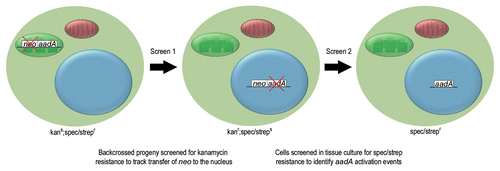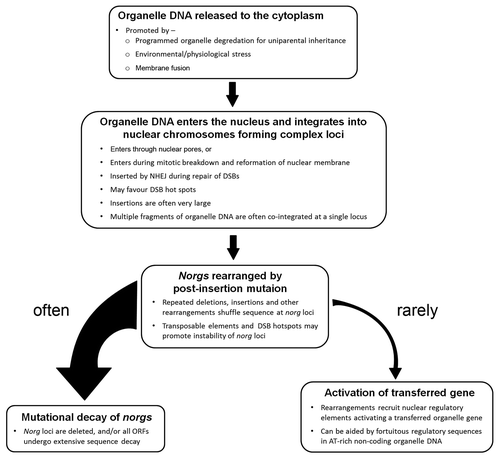Figures & data
Figure 1 Consecutive screens were used to identify endosymbiotic transfer of a chloroplast transgene. Screen 1, used transplastomic tobacco plants containing a plastid specific copy of aadA and a nucleus specific copy of neo in their plastid genome. These kanamycin sensitive (kans), spectinomycin and streptomycin resistant (spec/strepr) plants were backcrossed to female wild type and the resultant progeny tested for kanamycin resistance. Kanamycin resistant (kanr) progeny contained neo (and usually aadA) in their nuclear genome. These plants had wild type chloroplasts, inherited from their maternal parent and an inactive nuclear copy of aadA, making them sensitive to spectinomycin and streptomycin (spec/streps). In screen 2, cells from kanamycin resistant plants were screened for spectinomycin and streptomycin resistance to identify cells in which aadA had been activated in the nucleus.

